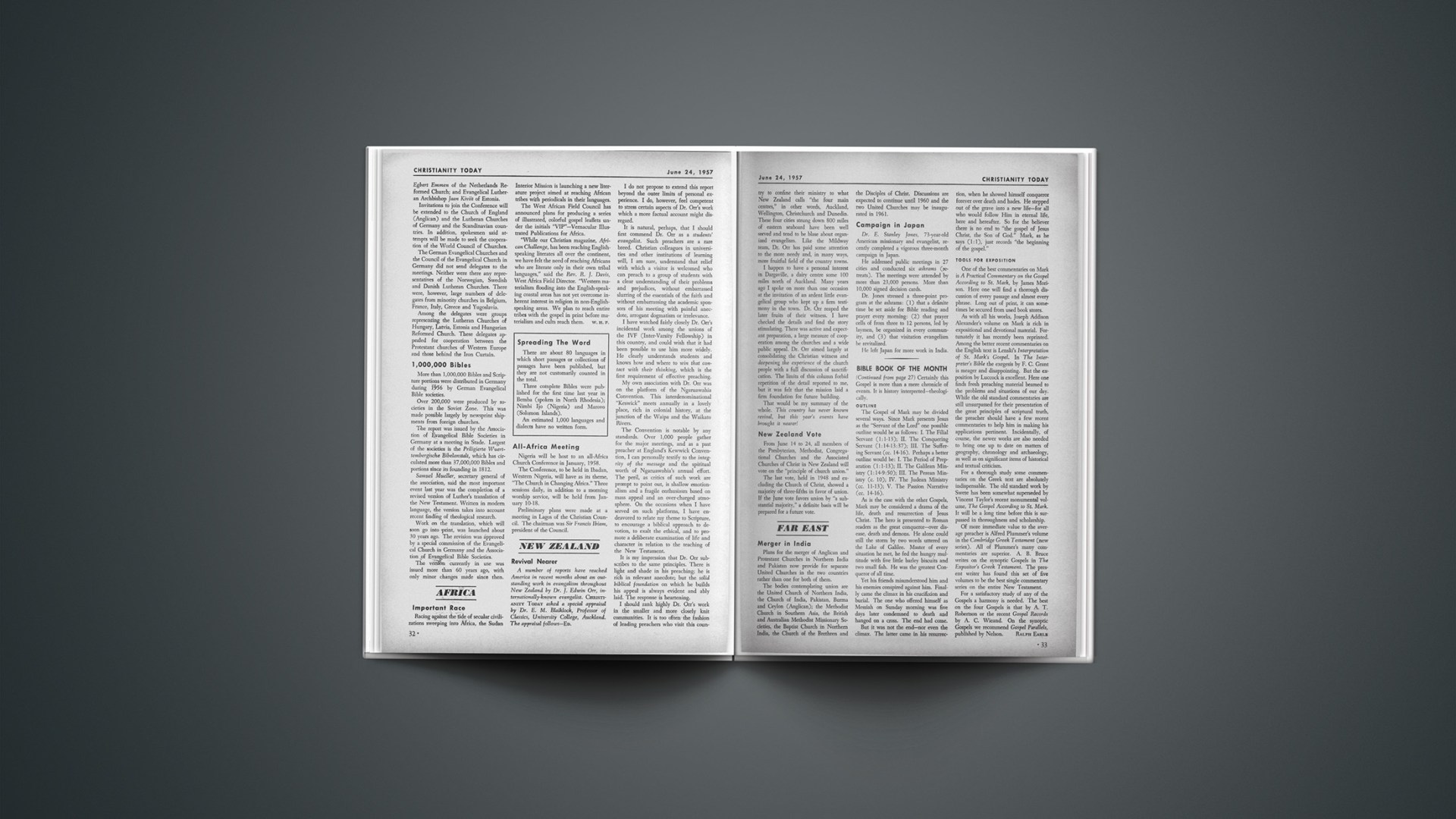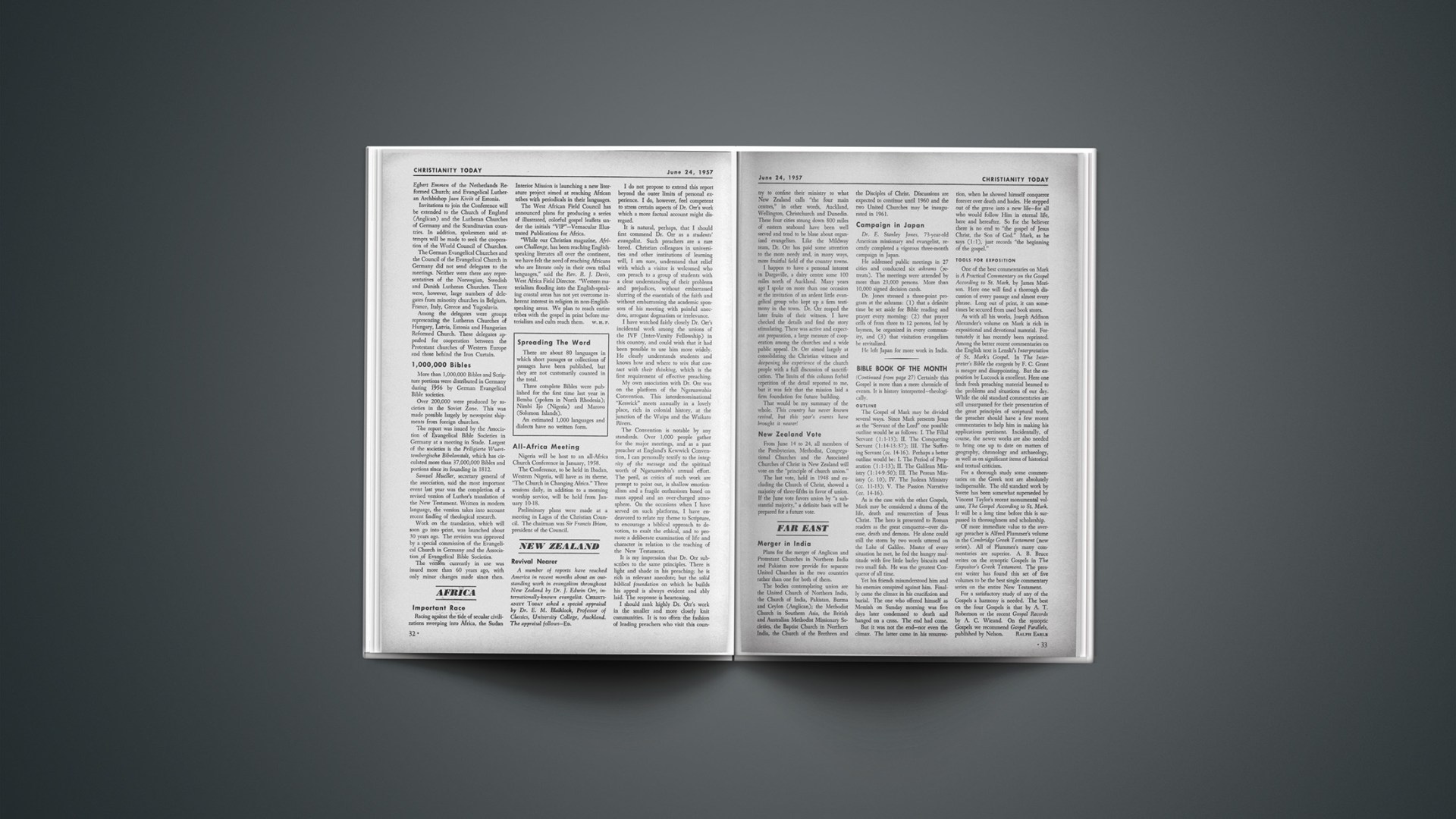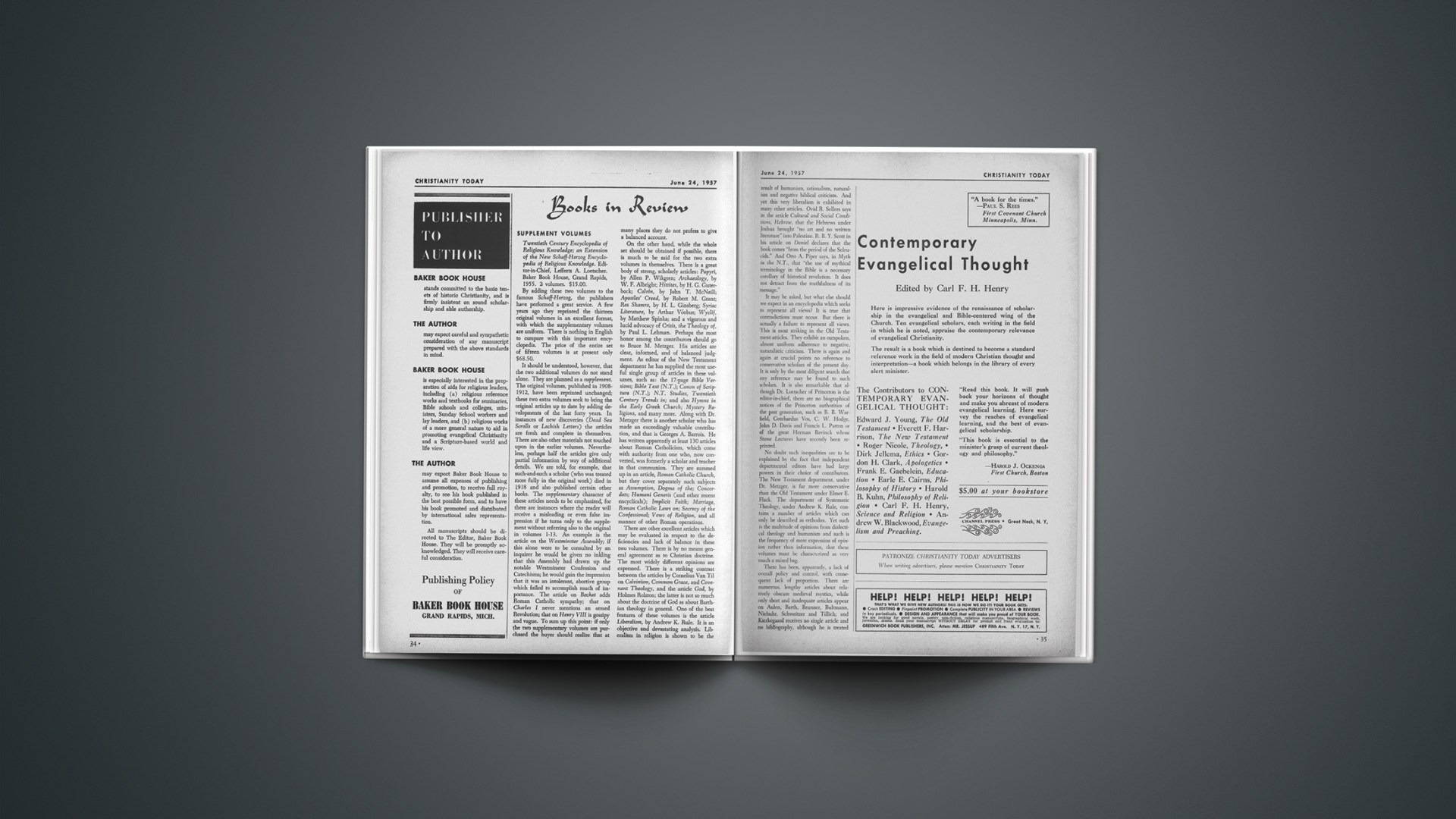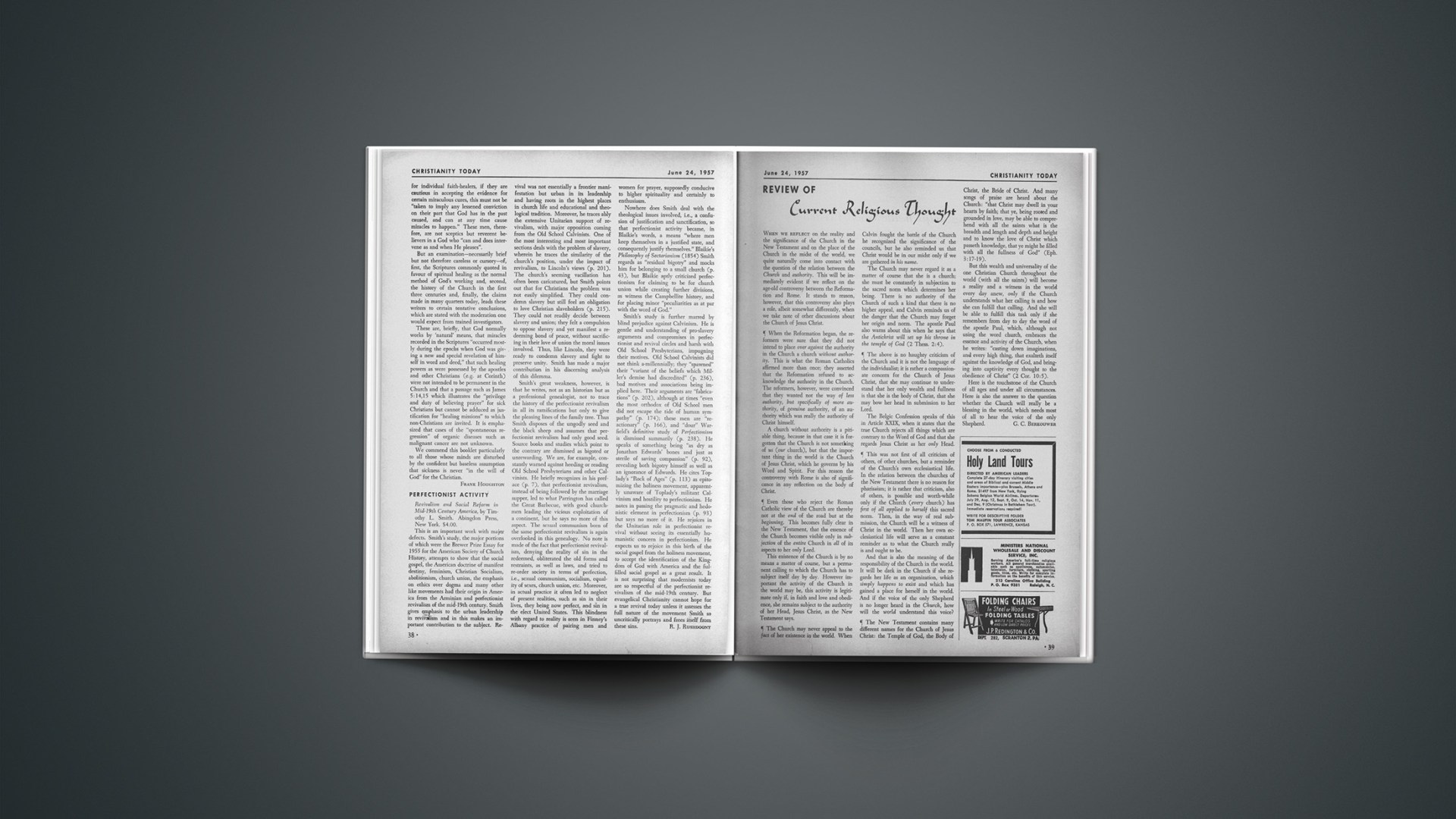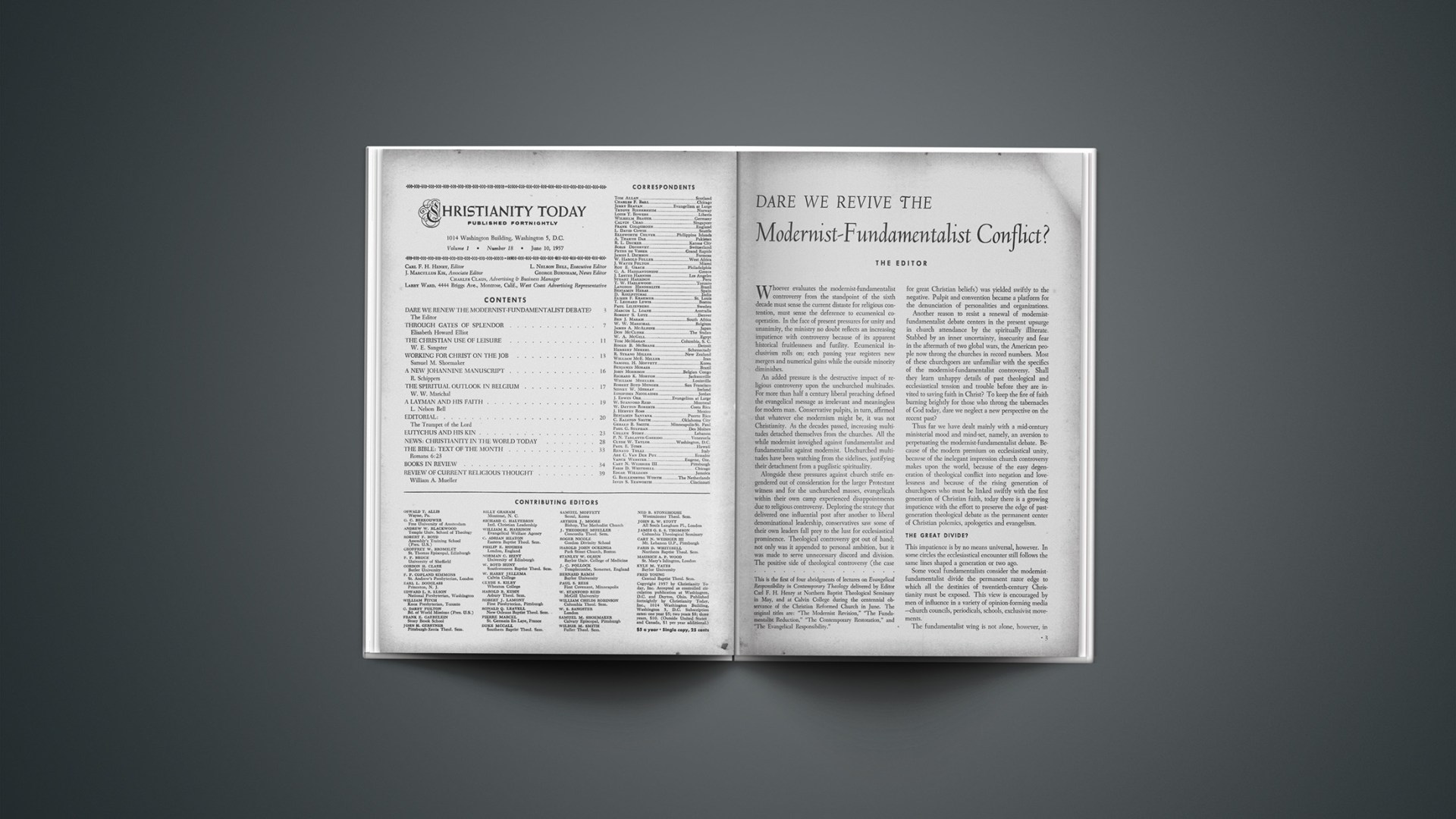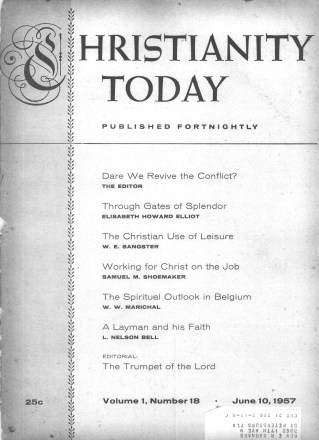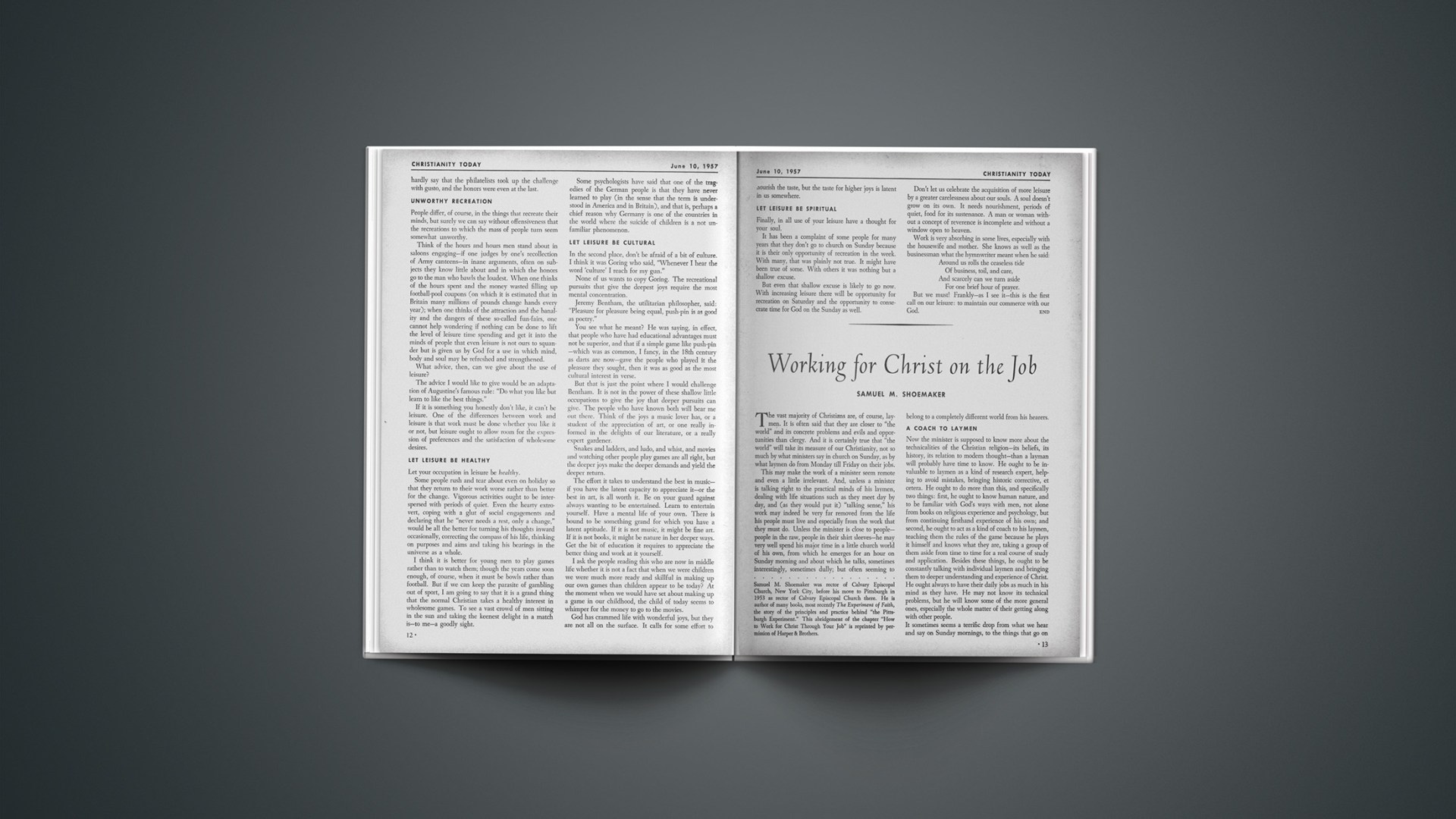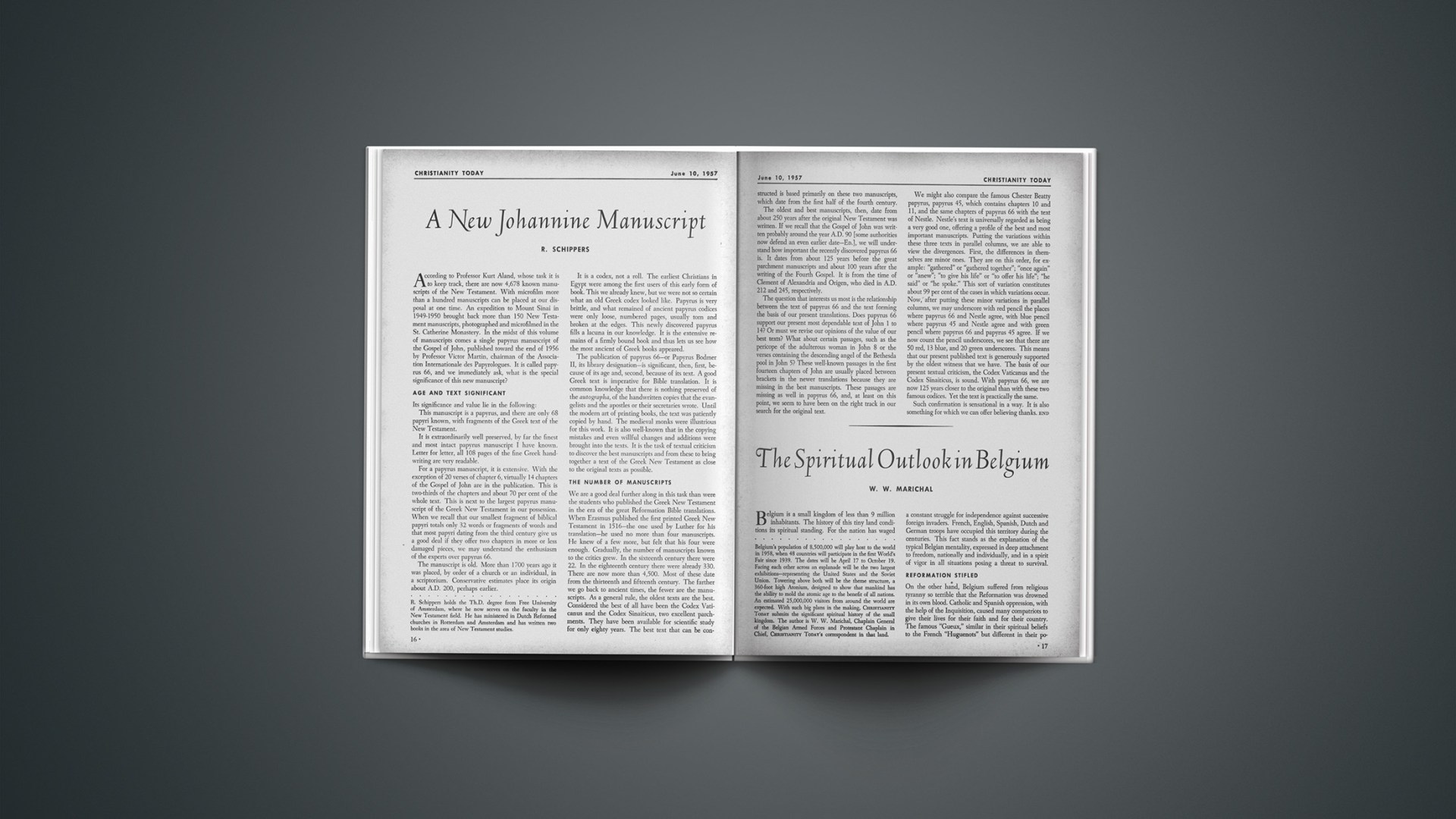Revival Nearer
A number of reports have reached America in recent months about an outstanding work in evangelism throughout New Zealand by Dr. J. Edwin Orr, internationally-known evangelist.CHRISTIANITY TODAYasked a special appraisal by Dr. E. M. Blaiklock, Professor of Classics, University College, Auckland. The appraisal follows—ED.
I do not propose to extend this report beyond the outer limits of personal experience. I do, however, feel competent to stress certain aspects of Dr. Orr’s work which a more factual account might disregard.
It is natural, perhaps, that I should first commend Dr. Orr as a students’ evangelist. Such preachers are a rare breed. Christian colleagues in universities and other institutions of learning will, I am sure, understand that relief with which a visitor is welcomed who can preach to a group of students with a clear understanding of their problems and prejudices, without embarrassed slurring of the essentials of the faith and without embarrassing the academic sponsors of his meeting with painful anecdote, arrogant dogmatism or irrelevance.
I have watched fairly closely Dr. Orr’s incidental work among the unions of the IVF (Inter-Varsity Fellowship) in this country, and could wish that it had been possible to use him more widely. He clearly understands students and knows how and where to win that contact with their thinking, which is the first requirement of effective preaching.
My own association with Dr. Orr was on the platform of the Ngaruawahia Convention. This interdenominational “Keswick” meets annually in a lovely place, rich in colonial history, at the junction of the Waipa and the Waikato Rivers.
The Convention is notable by any standards. Over 1,000 people gather for the major meetings, and as a past preacher at England’s Kewwick Convention, I can personally testify to the integrity of the message and the spiritual worth of Ngaruawahia’s annual effort. The peril, as critics of such work are prompt to point out, is shallow emotionalism and a fragile enthusiasm based on mass appeal and an over-charged atmosphere. On the occasions when I have served on such platforms, I have endeavored to relate my theme to Scripture, to encourage a biblical approach to devotion, to exalt the ethical, and to promote a deliberate examination of life and character in relation to the teaching of the New Testament.
It is my impression that Dr. Orr subscribes to the same principles. There is light and shade in his preaching; he is rich in relevant anecdote; but the solid biblical foundation on which he builds his appeal is always evident and ably laid. The response is heartening.
I should rank highly Dr. Orr’s work in the smaller and more closely knit communities. It is too often the fashion of leading preachers who visit this country to confine their ministry to what New Zealand calls “the four main centers,” in other words, Auckland, Wellington, Christchurch and Dunedin. These four cities strung down 800 miles of eastern seaboard have been well served and tend to be blase about organized evangelism. Like the Mild way team, Dr. Orr has paid some attention to the more needy and, in many ways, more fruitful field of the country towns.
I happen to have a personal interest in Dargaville, a dairy center some 100 miles north of Auckland. Many years ago I spoke on more than one occasion at the invitation of an ardent little evangelical group who kept up a firm testimony in the town. Dr. Orr reaped the later fruits of their witness. I have checked the details and find the story stimulating. There was active and expectant preparation, a large measure of cooperation among the churches and a wide public appeal. Dr. Orr aimed largely at consolidating the Christian witness and deepening the experience of the church people with a full discussion of sanctification. The limits of this column forbid repetition of the detail reported to me, but it was felt that the mission laid a firm foundation for future building.
That would be my summary of the whole. This country has never known revival, but this year’s events have brought it nearer!
New Zealand Vote
From June 14 to 24, all members of the Presbyterian, Methodist, Congregational Churches and the Associated Churches of Christ in New Zealand will vote on the “principle of church union.”
The last vote, held in 1948 and excluding the Church of Christ, showed a majority of three-fifths in favor of union. If the June vote favors union by “a substantial majority,” a definite basis will be prepared for a future vote.

